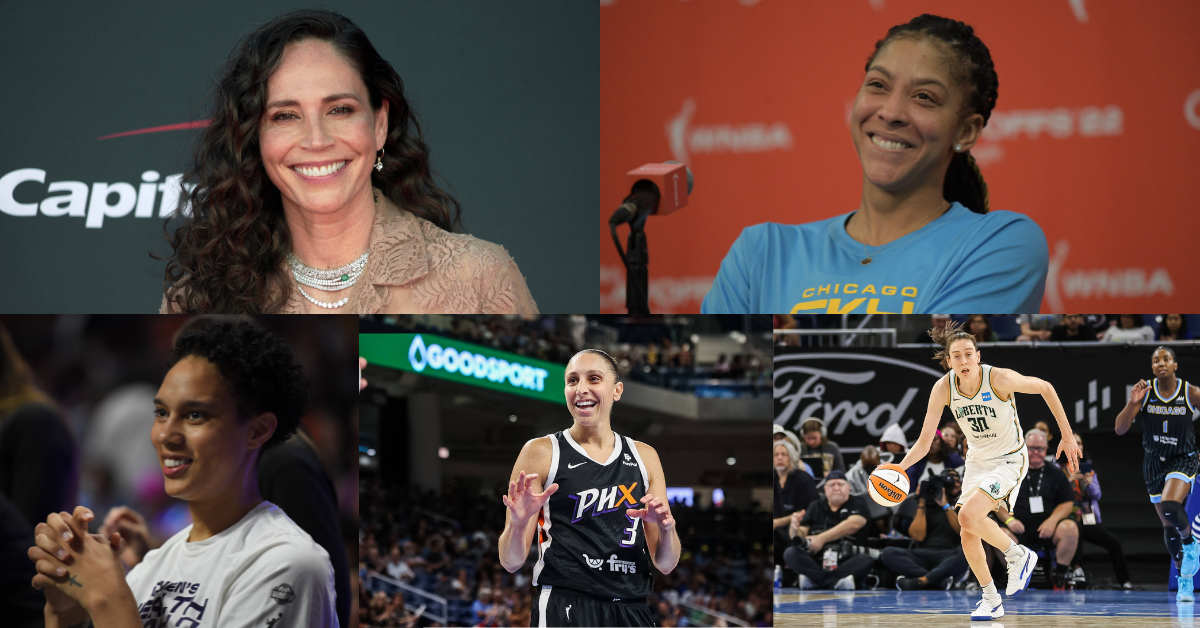
Imago
courtesy: imago

Imago
courtesy: imago
The NBA has been in existence since June 6, 1946. For the 75th anniversary of the men’s league’s extraordinary portfolio, the NBA released an all-time top 75 players list, featuring some of the greatest players to ever step on a basketball court. From Kareem Abdul Jabbar and Michael Jordan to LeBron James, James Harden and Giannis Antetokounmpo, all of them graced the coveted list due to their extraordinary careers. For the majority of men’s basketball history, fans missed a league for women, leading to the inception of one 27 years ago.
Watch What’s Trending Now!
The NBA Board of Governors approved the formation of the Women’s National Basketball Association (WNBA) and announced the news for the inception of the basketball league in April 1996. Women’s basketball entered a new era with this, and it didn’t take long for the league to rack up several achievements and honors. But who were the original teams in the league?
ADVERTISEMENT
Who are the 8 original teams of the WNBA?
Unlike the NBA, the WNBA had eight teams in its debut season, split into two conferences. The Charlotte Sting, Cleveland Rockers, Houston Comets and New York Liberty represented the Eastern Conference. On the other hand, the Los Angeles Sparks, Phoenix Mercury, Sacramento Monarchs and Utah Starzz made up the Western Conference.
On January 16, 1997, the first 16 players were assigned to these eight teams. The player pool expanded further on February 27, thanks to an Elite Draft that added two more players to each team, bringing the rosters to four players each. The Houston Comets made history by selecting Tina Thompson, the leading scorer in the Pac-10 Conference, as the first pick in the Inaugural WNBA Draft.
Top Stories
Josh Allen Makes Lifetime Buffalo Announcement as Pregnant Hailee Steinfeld Receives Bills QB’s Clear Family Plan

NTSB Appeals for Greg Biffle’s Wife’s Alleged In-Flight Text Messages as Crash Investigation Heats Up

Travis Kelce Reveals Real Reason Behind Decision to Snub the Media Amid Retirement Rumors

Sean Strickland Passes on UFC White House Opportunity in Yet Another Bold Confession

Donald Trump Issues Moving Message of Condolence for NASCAR’s Greg Biffle & Family During North Carolina Address

Another Almost Fatal Disaster Surfaces From Statesville Airport Amidst Ongoing Greg Biffle’s Crash Investigation

The league’s very first player signings were unveiled on October 23, 1996, with none other than Sheryl Swoopes and Rebecca Lobo leading the way. These two stars were soon joined by Ruthie Bolton, Lisa Leslie, Cynthia Cooper and Michele Timms (the first international player) among a host of other aspiring WNBA talents.
ADVERTISEMENT
ADVERTISEMENT
The Starzz drafted Margo Dydek, a towering 7-foot-2 center from Poland, as the top pick in the 1998 Draft. Dydek, who tragically passed away in 2011 was the tallest player in the WNBA history. In 1999, two-time Associated Press Women’s Basketball Player of the Year Chamique Holdsclaw was the No. 1 selection by the Washington Mystics.
Ann Wauters from Belgium became the first overall pick in 2000, selected by the Cleveland Rockers. The following year, Australian Olympian Lauren Jackson was chosen as the No. 1 pick by the Seattle Storm in 2001.
ADVERTISEMENT
While the league expanded from its original eight teams to 16 by 2000, the inclusion of the Detroit Shock and the Washington Mystics in 1998 first indicated promising growth for the future.
ADVERTISEMENT
The WNBA’s growth and expansion
In 1999 the league welcomed the Minnesota Lynx and Orlando Miracle taking the total to 12 teams between the two conferences. The year 2000 saw the addition of four more teams: the Indiana Fever, the Miami Sol, the Portland Fire and the Seattle Storm.
While the league has continued to evolve and adapt, it remains deeply rooted in the history and tradition of those original eight teams that laid the foundation for women’s professional basketball in the country.
Watch This Story: Making the MVP Shout Louder, A’ja Wilson Lauds 30YO Teammate After Special WNBA Playoff Achievement
ADVERTISEMENT
Currently, the league comprises 12 teams, with six in each conference. The league saw around 16 franchises at one time but despite their initial participation, some were eventually discontinued. These ex-franchises were the Sacramento Monarchs, Utah Starzz, Cleveland Rockers, Charlotte Sting, Portland Fire, Miami Sol and the Orlando Miracle.
While they are no longer part of the league currently, they will always hold a significant place in WNBA history and women’s basketball.
ADVERTISEMENT
ADVERTISEMENT
ADVERTISEMENT

